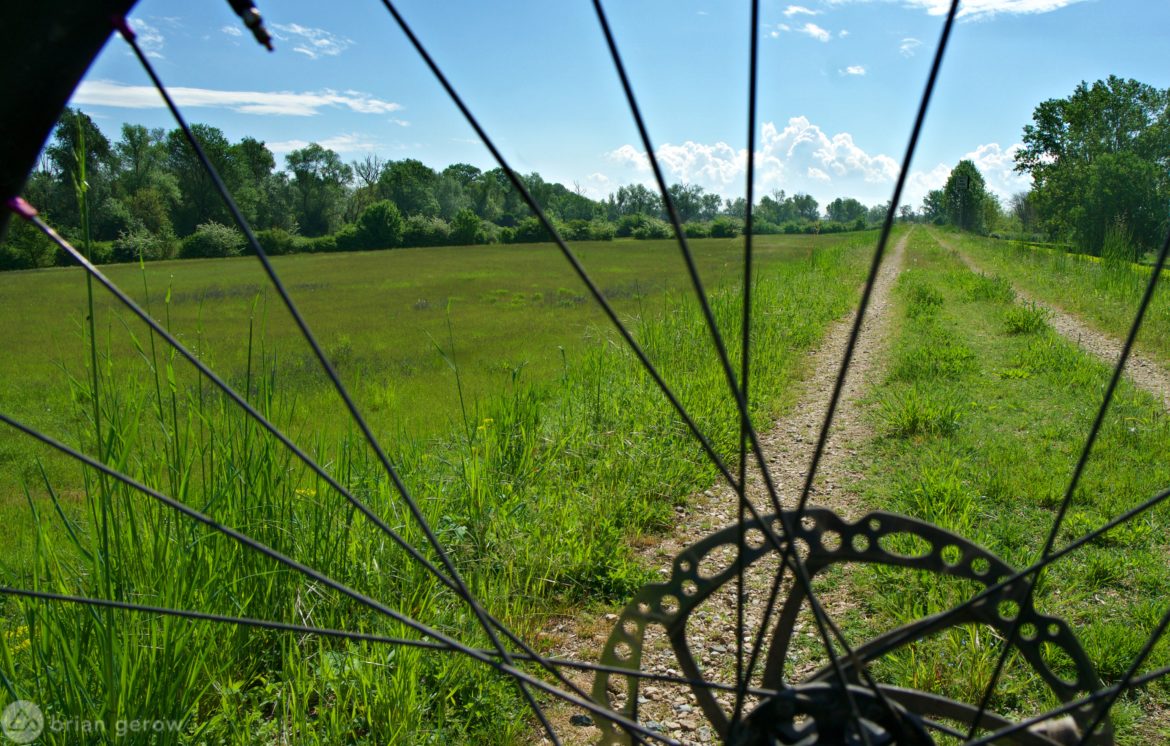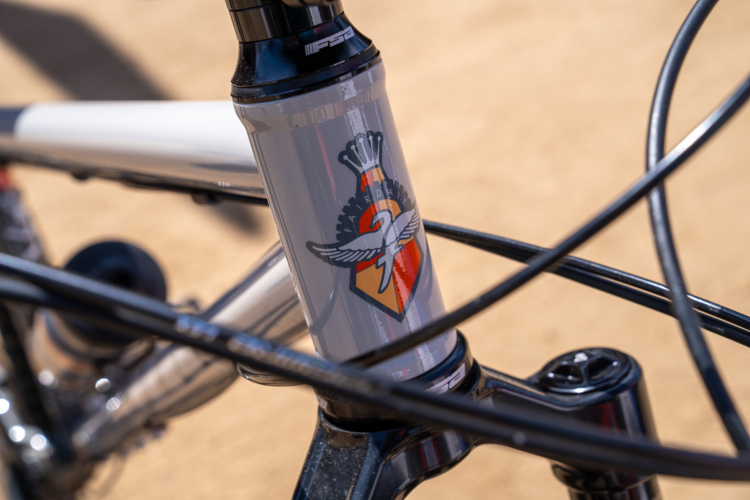
We grew up on rural gravel roads, riding whatever bike had enough air left in the tires.
It was late summer in the Selkirk mountains of Priest Lake, Idaho, and mosquitos streamed from the cabin’s septic tank cover that served as their rightful mothership. The Nitty Gritty Dirt Band’s latest tune blared through the shade of native western red cedar, bouncing off their towering trunks, taller than all of us ratty river-kids combined, and older than our greatest-grandparents.
An early memory of balancing between two wheels sits atop my grandma Gladys’s brown mixte, on a graveled county road outside that cabin. The generator light on grandma’s bike likely had more heft than the frame of its modern equivalent. I was pedaling with all of the kid-angst and excitement I could muster, to lock up the rear tire and whip-skid into the driveway in front of my sister or cousin who were waiting for their turn on the bike. I try to remember that kid and to have that kind of fun playing in the dirt today.
Those first whip-skids led to a lifetime of playing on bikes that I feel fortunate to continue. I went on to race cyclocross, road, and mountain bikes, and joined a supportive community of people who are equally infatuated with the rush of balance and traction. Most of the bike racers and riders I know have their own narrative of riding gravel-packed roads. Some folks grew up in rural areas, where gravel streets were far better than the dirt and mud roads that preceded them. The size-specific stones in the road help the surface drain and keep dust and mud in check. The bits of broken tarmac highway served as a spine for their broader gravel rib cage, but that smoother spine was too dangerous to pedal along.

The advent of “gravel bike” marketing over the past several seasons has made me giggle on a regular basis. I imagine someone at a bike company that makes fine cyclocross frames proposing to their marketing team, “we all love epic dirt-road rides, so why don’t we repaint our cyclocross bikes and sell them as gravel bikes. Who knows, It might just become the new and cool genre of cycling.” This someone was rightly laughed out of the room, then eventually the idea was given further consideration, and now we have a burgeoning industry segment of cyclocross bikes with slightly lower bottom brackets and wider tires, ready to ride where no one has ridden before. On gravel roads.

The reasons why mountain bikers and road cyclists enjoy riding gravel are many and good. You can still ride while the singletrack dries out, there is often less traffic when you leave the pavement, the auditory feedback from tires on slightly shifting stones is fantastic, you have a reason to use larger and cozier tires on a road ride, you get to geek out on different gear, and all of the other benefits of cycling are sprinkled on top of this lovely gravel cupcake.
Do we need specific bikes that bear the “gravel” moniker for rolling over the same smashed stones we have always pedaled on mountain bikes, ‘cross bikes, or road bikes? There are plenty of cycling genres that require purpose-built machines to improve the riding and racing experience, but the gravel scene hasn’t made a strong case for its gear. Until convinced otherwise, I am going to chalk the gravel-hype up to exceptionally adept marketing, and continue to have a laugh at the “latest gravel tech” news.
On rainy days, when the trails are too wet to respectfully shred, I ride my trusty hardtail or cyclocross race bikes on dirt and gravel roads to maintain fitness. I also ride my long travel mountain bike on gravel roads, sometimes climbing for 3-4 consecutive hours to reach some of the best trails available. So, are all of my bikes gravel bikes? When I ride them on gravel — I suppose they are.


















